German Army Tropical Service Belt
CATEGORY: Version
SKU: 20.GOR.02.02.02.004.000
Estimated market value:
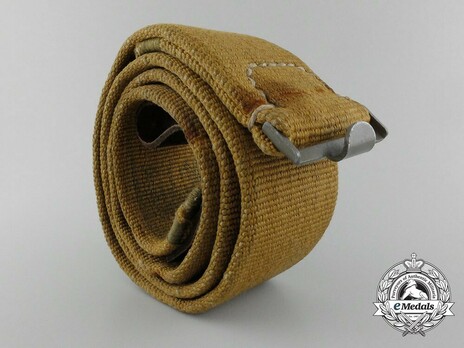
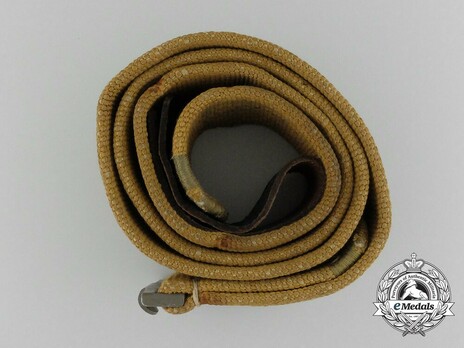
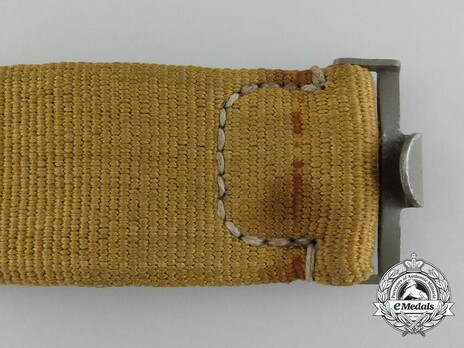
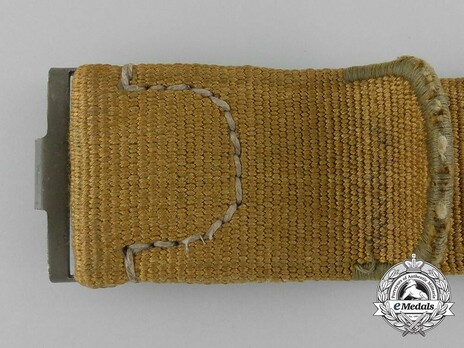
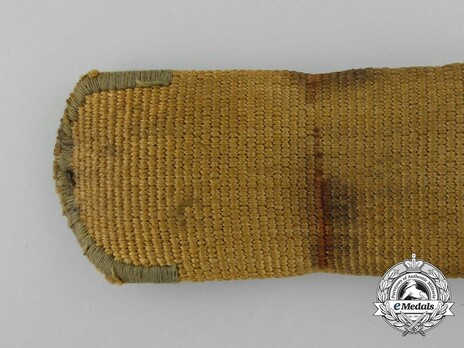
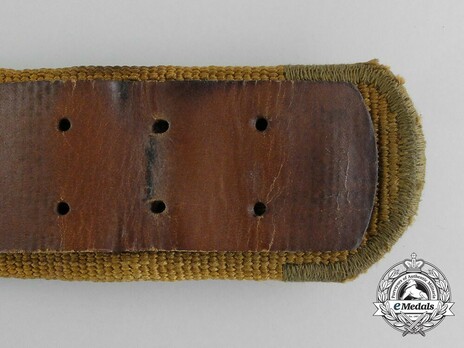
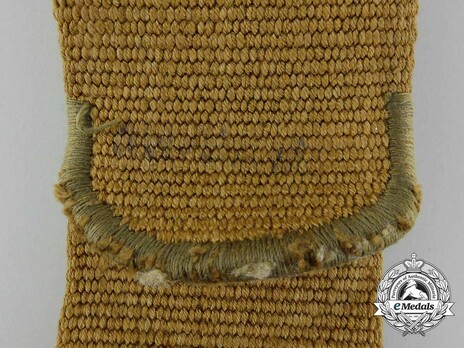
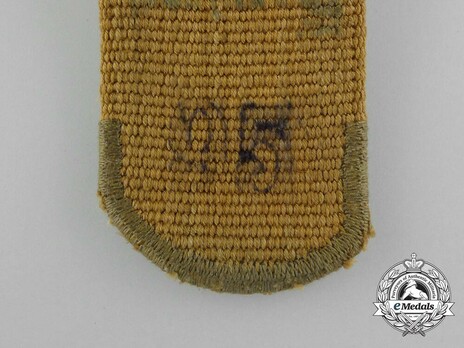
Estimated market value:
A DAK belt; crafted in thick tan webbed cotton; stamped in black ink “95” on the underside of the belt at the right end; reinforced stitching on both ends of the belt; leather tab with finished brown upper, stitched in place on the underside on the right end; the tab with seven rows of two vertical holes each for length adjustment; marked “74” with black ink; magnetic olive drab-coloured receiving clip on the left end; without sliders; measuring a total of 950 mm x 46 mm; stains and some soiling near where the buckle was from use and age, otherwise better than fine condition.
The belt buckle worn by NCOs (non-commissioned officers) and EMs (enlisted men) was introduced in a regulation from January 24, 1936. Initially it was made of nickel or aluminum alloy, and consisted of two pieces. A stamped center disc was attached to the rectangle by four folded tabs. The letters read: Gott mit uns (God with us). Initially buckles had a pebbled field, but later buckles with a smooth field were introduced as well, which eventually became the general pattern.
Later in 1936 a die struck one-piece buckle with either a bright metal finish or an olive green factory paint finish for wear in combat was introduced. In 1940 buckles made of steel were produced, the colour varied between light apple green, olive green, and field grey. Some buckles were painted yellow ochre by soldiers in the field in Italy or North Africa for a better camouflage effect. Late in the war, some buckles were produced in a dark blue colour.
The buckle was usually worn on a brown or black leather belt.
The tropical version of the belt buckle was introduced in 1941. It was intended for troops in North Africa. This version came with a webbing belt instead of a leather one, presumably because leather would not be suitable for the hot and dry conditions. The colour was a light olive yellow, the belt was sand-coloured.
In the beginning the eagle faced to the wearer’s right, which was soon changed to an eagle facing to the wearer’s left. Ultimately it was changed back. The reasons for these changes are unknown.
The dress or brocade belt buckle for officers and generals was introduced in a regulation from July 9, 1937. It is a round buckle made from stamped metal. All General ranks wore a gold-plated or gilded version, officers wore a silver-coloured one. Officers wearing the tropical uniform wore a buckle that was over-sprayed olive-drab to go with the olive-drab web belt.
The dress belt was made of aluminum, with two dark green horizontal stripes along its length. For band leaders, the stripes were red.
With the regular service uniform officers wore a silver-coloured claw buckle, gilt for generals. These buckles were worn on a distinctive dark brown leather belt with a shoulder strap. The shoulder strap was eventually discontinued.

Comments
Sign in to comment and reply.


Scroll Top